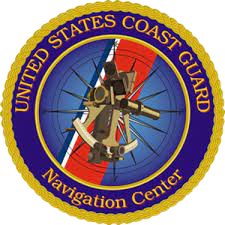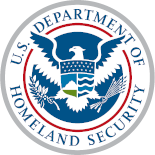Radios That You Need
Before you purchase anything else, make sure you have a VHF marine radio. A VHF marine radio is the single most important radio system you should buy. It is probably also the most inexpensive. If you plan to travel more than a few miles offshore, plan to purchase an MF/HF radiotelephone or mobile satellite telephone, an emergency position indicating radio beacon, or EPIRB, and a second VHF radio or cellular telephone as well. Mobile satellite telephones are becoming more common and more inexpensive. The mobile satellite will provide easier and clearer communications than the MF/HF radiotelephone, but the HF radiotelephone will receive high seas marine weather warnings.
Radio Watchkeeping Regulations
If you have a VHF-FM radio, there are certain regulations in place for monitoring/listening to your radio. Please read our radio watchkeeping section for more information.
Mayday! Mayday! Mayday!...Sending A Distress Call
You may only have seconds to send a distress call. Here's what you should do:
- Procedure for Digital Selective Calling (DSC) Radio: DSC MAYDAY
- Procedure for VHF Channel 16 MAYDAY:
- If you have an MF/HF radiotelephone tuned to 2182 kHz, send the radiotelephone alarm signal if one is available. If you have a VHF marine radio, tune it to channel 16. Unless you know you are outside VHF range of shore and ships, call on channel 16 first.
- Distress signal "MAYDAY", spoken three times.
- The words "THIS IS", spoken once.
- Name of vessel in distress (spoken three times) and call sign or boat registration number, spoken once.
- Repeat "MAYDAY" and name of vessel, spoken once.
- Give position of vessel by latitude or longitude or by bearing (true or magnetic, state which) and distance to a well-know landmark such as a navigational aid or small island, or in any terms which will assist a responding station in locating the vessel in distress. Include any information on vessel movement such as course, speed and destination.
- Nature of distress (sinking, fire etc.).
- Kind of assistance desired.
- Number of persons onboard.
- Any other information which might facilitate rescue, such as length or tonnage of vessel, number of persons needing medical attention, color hull, cabin, masks, etc.
- The word "OVER"
Stay by the radio if possible. Even after the message has been received, the Coast Guard can find you more quickly if you can transmit a signal on which a rescue boat or aircraft can home.
For example:
MAYDAY-MAYDAY-MAYDAY
THIS IS BLUE DUCK-BLUE DUCK-BLUE DUCK WA1234 MAYDAY THIS IS BLUE DUCK
CAPE HENRY LIGHT BEARS 185 DEGREES MAGNETIC-DISTANCE 2 MILES
STRUCK SUBMERGED OBJECT
NEED PUMPS-MEDICAL ASSISTANCE AND TOW
THREE ADULTS, TWO CHILDREN ONBOARD
ONE PERSON COMPOUND FRACTURE OF ARM
ESTIMATE CAN REMAIN AFLOAT TWO HOURS
BLUE DUCK IS THIRTY TWO FOOT CABIN CRUISER-WHITE HULL-BLUE DECK HOUSE
OVER
Repeat at intervals until an answer is received.
If You Hear A Distress Call
If you hear a distress message from a vessel and it is not answered, then you must answer. If you are reasonably sure that the distressed vessel is not in your vicinity, you should wait a short time for others to acknowledge.
MF/HF Radiotelephone
Your VHF radio is intended mainly for short range communications, generally 5-10 miles, and at least 20 miles to a USCG station. To communicate at longer ranges, you will normally need a satellite telephone or an MF/HF marine radiotelephone. Marine radiotelephone equipment normally operates between 2 - 26 MHz using single sideband emissions. MF/HF marine radiotelephones can also be used to receive high seas weather broadcasts, and by using a computer and a special interface provided by some coast stations, can provide Internet email.
What To Do If No One Responds To Your Distress Call
Tune your HF radiotelephone to an HF channel guarded by the Coast Guard, and repeat your mayday call. Activate your EPIRB.
Frequencies You May Use
See the High Frequency Radiotelephone Channels webpage. HF radiotelephone channels are normally limited to operational, business, safety or public correspondence purposes.
Radiotelephone Alarm Signal
This signal consists of two audio tones transmitted alternatively on the distress frequency 2182 kHz. It is not used over VHF marine radio in the United States, although it may be used on VHF in Canada. This signal is similar in sound to a two-tone siren used by some ambulances. When generated by automated means, it shall be sent continuously as practicable over a period of not less than 30 seconds nor more than 1 minute. The purpose of the signal is to attract attention or to activate automatic devices giving the alarm. Cargo ships ceased guarding this frequency on February 1, 1999.
The radiotelephone alarm signal is used only in a distress, including when a person has been lost overboard and the assistance of other vessels is required.
The radiotelephone navigation warning signal, a single 2200 Hz tone transmitted twice per second, is used to announce a storm or similar warning.
Boater Calling Channel (VHF Channel 9)
The Federal Communications Commission established VHF-FM channel 9 as a supplementary calling channel for noncommercial vessels (recreational boaters) at the request of the Coast Guard. A ship or shore unit wishing to call a boater would do so on channel 9, and anyone (boaters included) wishing to call a commercial ship or shore activity would continue to do so on channel 16. Recreational boaters would continue to call the Coast Guard and any commercial facility on channel 16.
The purpose of the FCC regulation was to relieve congestion on VHF channel 16, the distress, safety and calling frequency. FCC regulations require boaters having VHF radios to maintain a watch on either VHF channel 9 or channel 16, whenever the radio is turned on and not communicating with another station.
Since the Coast Guard generally does not have the capability of announcing an urgent marine information broadcast or weather warning on channel 9, use of channel 9 is optional. We recommend boaters normally keep tuned to and use channel 16 in those waters unless otherwise notified by the Coast Guard.
Procedure For Calling A Ship By Radio
You may use channel 16 to call a ship or shore station, but if you do so, you must, must be brief! We recommend this same procedure be used over channel 9, if channel 9 is used as a calling channel.
Blue Duck: "Mary Jane, this is Blue Duck" (the name of the vessel or MMSI being called may be said 2 or 3 times if conditions warrant)
Mary Jane: "Blue Duck, this is Mary Jane. Reply 68" (or some other proper working channel)
Blue Duck: "68" or "Roger"
Global Maritime Distress & Safety System
VHF maritime channel 70 (156.525 MHz) is authorized exclusively for distress, safety and calling purposes using digital selective calling (DSC) techniques. No other uses are permitted.
Channel 70 is used to send distress alerts, safety announcements and for calling purposes under the Global Maritime Distress and Safety System (GMDSS). Many vessels are now equipped with DSC capability and are using channel 70 for this purpose. It is essential that this channel be protected.
Storm Warnings
The Coast Guard announces storm warnings and other urgent marine information broadcasts on VHF channel 16 and 2182 kHz before making the broadcasts on VHF channel 22A and 2670 kHz respectively. Storm warnings and forecasts are also made by NOAA Weather Radio.
MAYDAY Radio Checks and other Hoaxes
A growing number of boaters unsuccessful in getting a radio check on VHF channel 16 are calling MAYDAY to get a response. Every hoax, including MAYDAY radio checks, is subject to prosecution as a Class D felony under Title 14, Section 85 of the U.S. Code, liable for a $5000 fine plus all costs the Coast Guard incurs as a result of the individual's action. Since hoaxes can lead to loss of life, the Coast Guard and Federal Communications Commission will work closely together, using when necessary FCC equipment capable of identifying the electronic signature of the offending radio. We ask your cooperation in helping us and the FCC remove hoaxes from the VHF radiotelephone distress, safety and calling channel 16.
Radio Checks
Radio checks with the Coast Guard Communications Stations on DSC and HF radiotelephone are allowed.
Federal Communications Commission (FCC) Radio License Information
An FCC ship station radio license is no longer required for any vessel travelling in U.S. waters which uses a VHF marine radio, radar or EPIRB, and which is not required to carry radio equipment. A license is necessary however for any vessel required to carry a marine radio, on an international voyage, or carrying an HF single sideband radiotelephone or marine satellite terminal. FCC license forms, including applications for ship and land station radio licenses, can now be downloaded from the FCC website.
Satellite Communications
Currently the Inmarsat Organization, an international organization established by treaty, is the sole provider of worldwide maritime mobile satellite communications offering emergency calling capability. Coverage is available between about 70 deg N latitude and 70 deg S latitude. Other mobile satellite systems are also becoming available, but these systems in general do not offer an emergency calling capability.
More Information
- Cellular Telephones
- Coast Guard high seas radio distress watchkeeping schedules
- Coast Guard Telecommunications
- Coast Guard VHF Coverage in Your Area
- Maritime Safety Broadcast Information
- National Weather Service Marine Product Information Dissemination (this link leads outside the USCG)
- Rules which require listening to your VHF marine radio
- VHF Marine Radio Channels and Frequencies
General Boating Boating Safety Information
Hours of operation: Monday through Friday
8:00 AM to 5:00 PM EST
Excluding government holidays
Infoline: 1-800-368-5647
For Text Telephone service: 1-800-689-0816
email at: uscginfoline@gcrm.com

